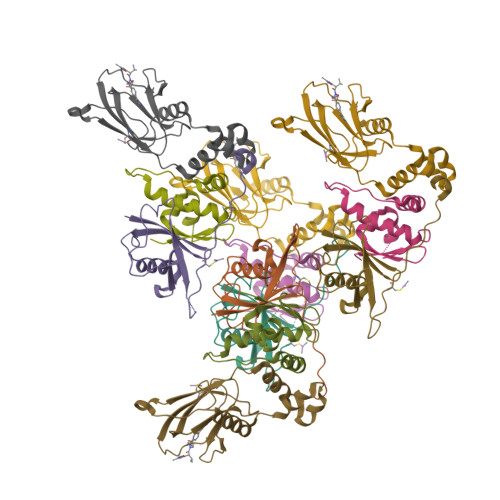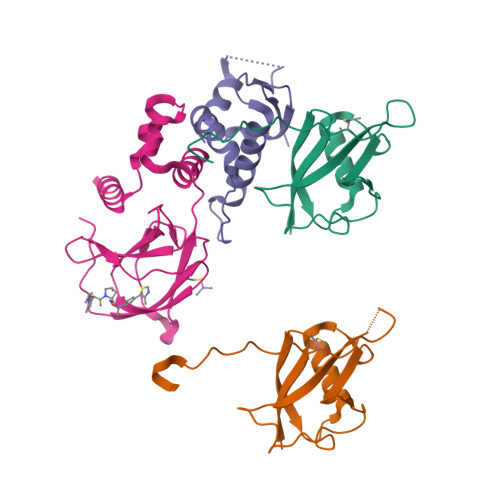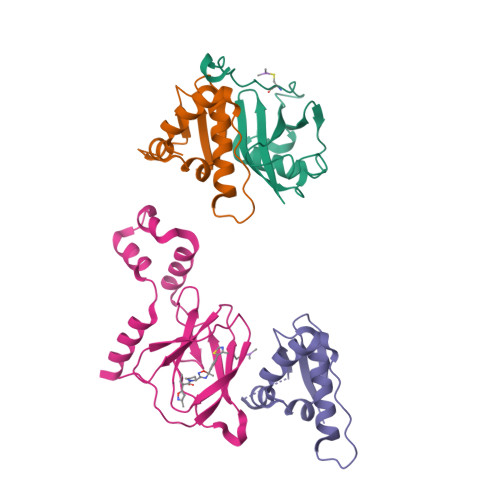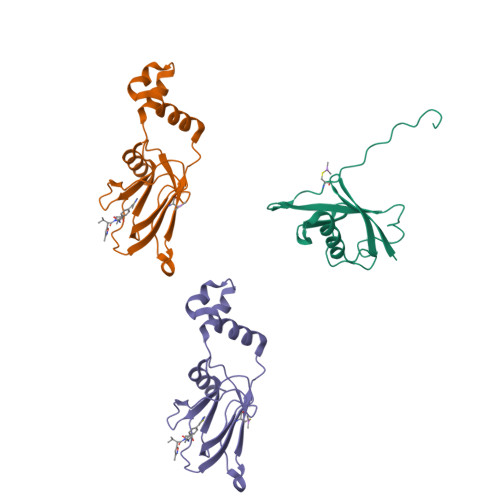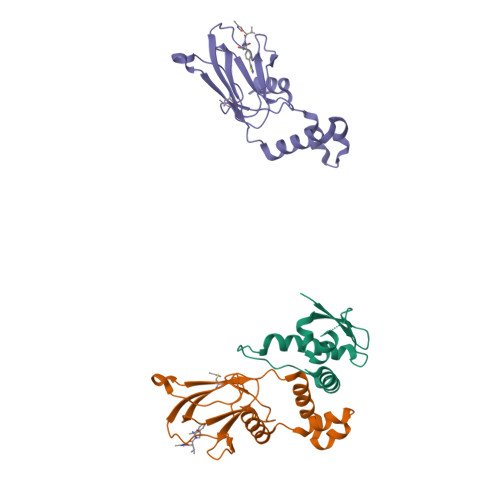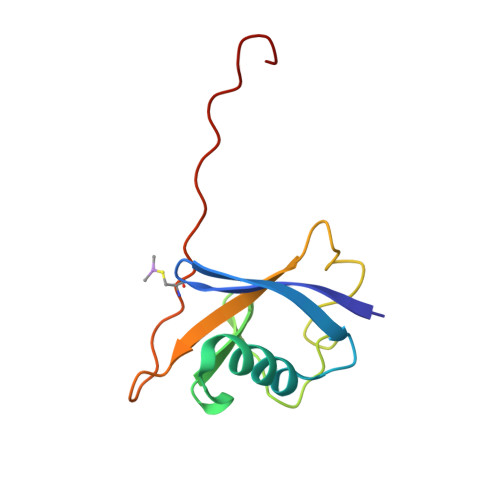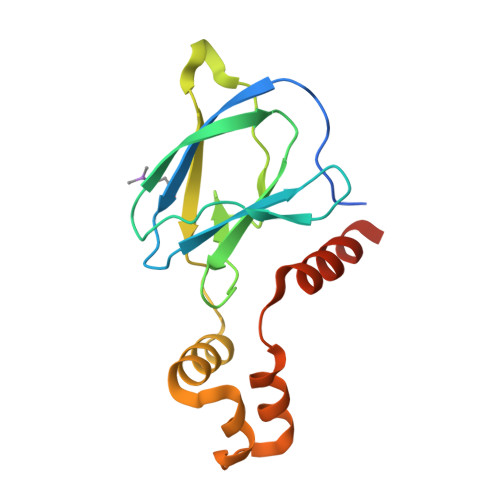Systematic Potency and Property Assessment of VHL Ligands and Implications on PROTAC Design.
Krieger, J., Sorrell, F.J., Wegener, A.A., Leuthner, B., Machrouhi-Porcher, F., Hecht, M., Leibrock, E.M., Muller, J.E., Eisert, J., Hartung, I.V., Schlesiger, S.(2023) ChemMedChem 18: e202200615-e202200615
- PubMed: 36749883
- DOI: https://doi.org/10.1002/cmdc.202200615
- Primary Citation of Related Structures:
8BDI, 8BDJ, 8BDL, 8BDM, 8BDN, 8BDO, 8BDS, 8BDT, 8BDX, 8BEB - PubMed Abstract:
Herein, we describe a systematic SAR- and SPR-investigation of the peptidomimetic hydroxy-proline based VHL-ligand VH032, from which most to-date published VHL-targeting PROTACs have been derived. This study provides for the first time a consistent data set which allows for direct comparison of structural variations including those which were so far hidden in patent literature. The gained knowledge about improved VHL binders was used to design a small library of highly potent BRD4-degraders comprising different VHL exit vectors. Newly designed degraders showed favorable molecular properties and significantly improved degradation potency compared to MZ1.
Organizational Affiliation:
Discovery and Development Technologies, Merck Healthcare KGaA, Frankfurter Straße 250, 64293, Darmstadt, Germany.








